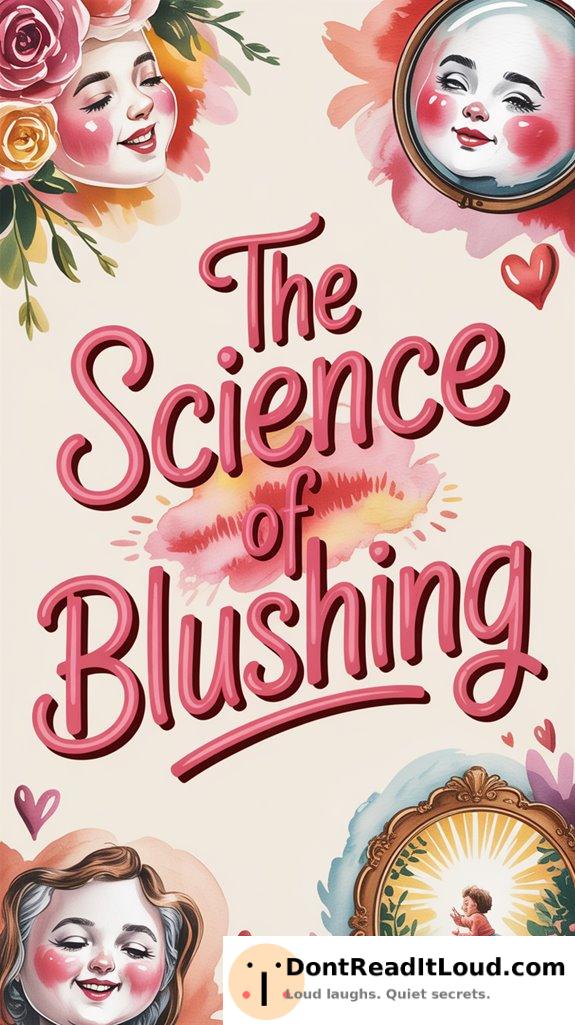
Blushing is a unique physiological response caused by the sympathetic nervous system releasing adrenaline, which widens facial blood vessels and reddens your cheeks. Emotions like embarrassment or social anxiety often trigger this reaction, signaling honesty or remorse. Evolutionarily, blushing has acted as a silent social cue, shaping how others perceive us in different cultures. Curious about how this involuntary response influences social interactions and helps shape human connection?
The Physiology of Blushing
When you blush, your body showcases a unique interaction between your nervous system and blood vessels. Imagine it as an unexpected spotlight on your face. Your nervous system signals the release of adrenaline, which speeds up your heartbeat and causes a noticeable change in your blood flow.
Blood vessels in your face expand, turning your cheeks a distinctive shade of red.
The sympathetic nervous system is responsible for this reaction, making your blush impossible to hide. While you can’t control when you blush, remember that this response is uniquely human—something to appreciate!
Emotional Triggers and Blushing
Blushing isn’t just a physical reaction; it’s closely connected to our feelings too. Picture this: you’re at a party, and someone brings up that time you mistook a mannequin for a person. Instantly, your cheeks flush with embarrassment. That response isn’t just quirky—it’s something everyone can relate to.
Social anxiety can also trigger blushing. Have you ever felt all eyes on you as you stumble over your words? Your face might turn bright red. It’s your body’s way of signaling, “I’m feeling exposed right now!”
The Evolutionary Significance of Blushing
Though it might seem like a quirky reaction, blushing has deep evolutionary roots that go beyond simple embarrassment. Envision our ancestors, sitting around the prehistoric campfire, trying to impress others with their mammoth-hunting skills. A well-timed blush could signal sincerity, honesty, or even a bit of harmless self-deprecation.
Today, cultures interpret blushing in many different ways. In some societies, it’s a charming sign of humility; in others, it might just make you stand out in a crowd.
Historically, blushing acted as a silent apology or showed someone felt guilty, which could help avoid conflict or even exile. So, next time you blush, remember you’re taking part in a long-standing, evolutionary tradition that’s more than just a reaction.
Social and Psychological Impacts of Blushing
As you navigate social interactions, the involuntary act of blushing can have a profound impact on how others see you.
Imagine you’re in a meeting and your cheeks suddenly turn red. Your body language might suggest embarrassment, guilt, or simply that you’re feeling overheated.
Blushing is a universal signal, but cultural interpretations can differ. In some places, blushing is seen as a sign of honesty; in others, it might lead to teasing.
You could think of it as nature’s way of putting you in the spotlight, even if you didn’t ask for it.
The next time you blush, remember that your reaction is unique—puzzling, vivid, yet always memorable.
Conclusion
You’ve explored the science behind blushing, learning about its physiological causes and emotional triggers. Evolution may have shaped this response to strengthen social bonds and communication. Understanding blushing’s social and psychological effects helps you appreciate its unique role in human interaction. The next time your cheeks flush, remember it’s a natural reaction that links us all. Embrace it—it’s a beautiful part of being human.



